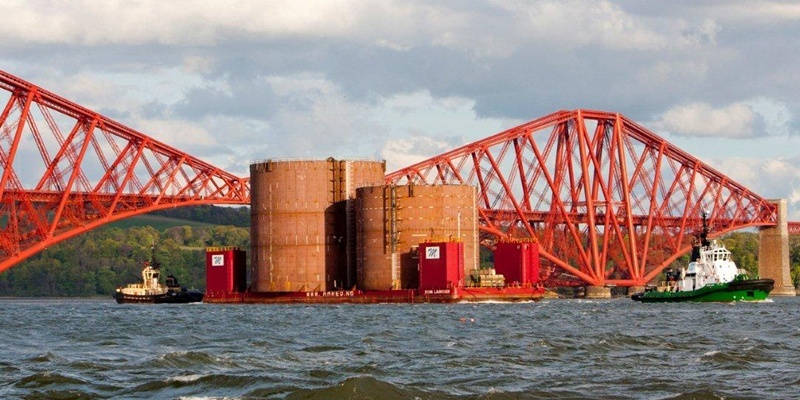The new Forth crossing will be fitted with dehumidification equipment to cut the risk of the corrosion which has blighted the existing bridge.
At a briefing on the progress of the £1.4 billion project being built by the Forth Crossing Bridge Constructors, Transport Scotland project director David Climie said work was on schedule.
”We are still exactly where we want to be, on time and budget,” he said.
Only three months ago there were 384 people working from the Rosyth base but now that number has more than doubled, with 800 staff working on various parts of the site. At its peak 1,200 staff will be employed.
One of the most important milestones of the entire project has just been reached the arrival of the first two caissons which will form the foundations of the north and south towers.
In a ”foundation” year for the project, Mr Climie said: ”We are extremely happy with the way things are progressing.”
Carlo Germani, the FCBC project director, said: ”We are into the real construction work now. We have done a lot of the preparation and what you see is work on the bridge itself starting with the arrival of the caissons.”
These are the huge cylinders ranging in height from 21.1m to 30m around the same as an eight-storey building with diameters of around 32m.
The largest weighs roughly 1,200 tonnes, making it one of the largest steel caissons ever sunk down to the seabed.
They will be used as moulds for the foundations, comprising underwater and reinforced structural concrete. More caissons are due to arrive in a few days.
FCBC’s Carson Carney explained the process of building the central tower, which will be constructed on site in 4m high increments, would start this year.
The deck sections are being built in China and Spain and will be shipped over and stored at Rosyth.
With corrosion affecting the existing bridge, Mr Carney explained the crossing’s cables are made up of strands containing galvanised steel wires, with a wax coating and covered in plastic.
”There is no way you can get water into the actual strands themselves. This is a state-of-the-art type system.”
Each strand is capable of being individually replaced if necessary without causing widespread disruption to traffic.
There is a dehumidification system at deck level and on the anchorage points.
